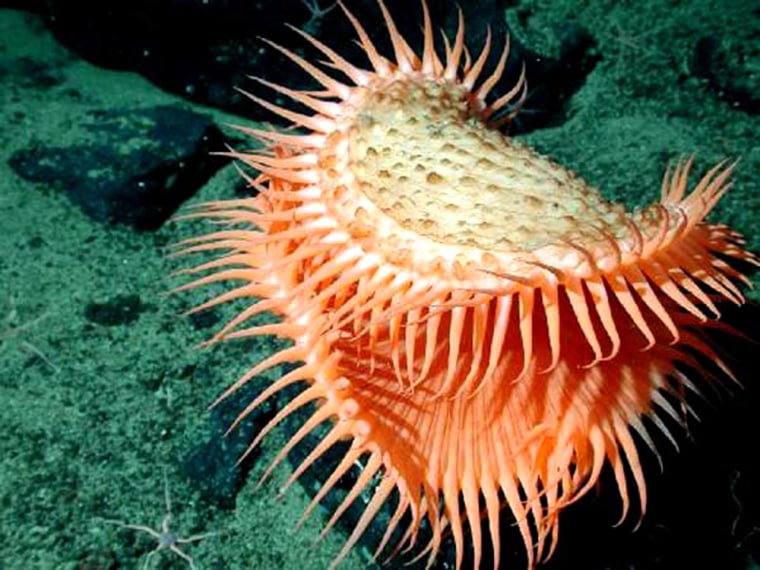The public can follow along on the Web as a team of scientists explore a massive volcano that's submerged thousands of feet under water in Monterey Bay.
Scientists on a research ship exploring the Davidson Seamount, rising from 12,000 feet (3,660 meters) below the ocean's surface, have been posting images, video clips and journal entries from the site since leaving Moss Landing last Thursday.
A BBC crew also is on board filming a documentary scheduled to air next year.
"We had heard many reports about how spectacular this place was, and they certainly proved to be no exaggeration," BBC producer Penny Allen wrote in the expedition's Web journal. "Spectacular forests of colorful corals, sponges and anemones stretched as far as the eye could see; a gorgeous expanse of pink, yellow, orange and white."
The volcano, which is twice as tall as Mount Diablo in Contra Costa County, is located 75 miles (120 kilometers) southwest of Monterey and boasts coral gardens as high as 12 feet (3.7 meters) tall.
Most of the seamount had been unexplored despite two previous expeditions to the site, when scientists used a robotic submersible to take pictures and grab marine life specimens.
Scientists have already found what appears to be a new sponge species that "looks a bit like a lovely white stringy, spiny cactus," Jim Barry, a scientist with the Monterey Bay Aquarium Research Institute, wrote in an e-mail from the ship.
The volcano itself is believed to have erupted some 10 million to 15 million years ago, said David Clague, a geologist with the research institute.
The entries are available online via the NOAA Ocean Explorer site or the Monterey Bay Research Institute's site.
